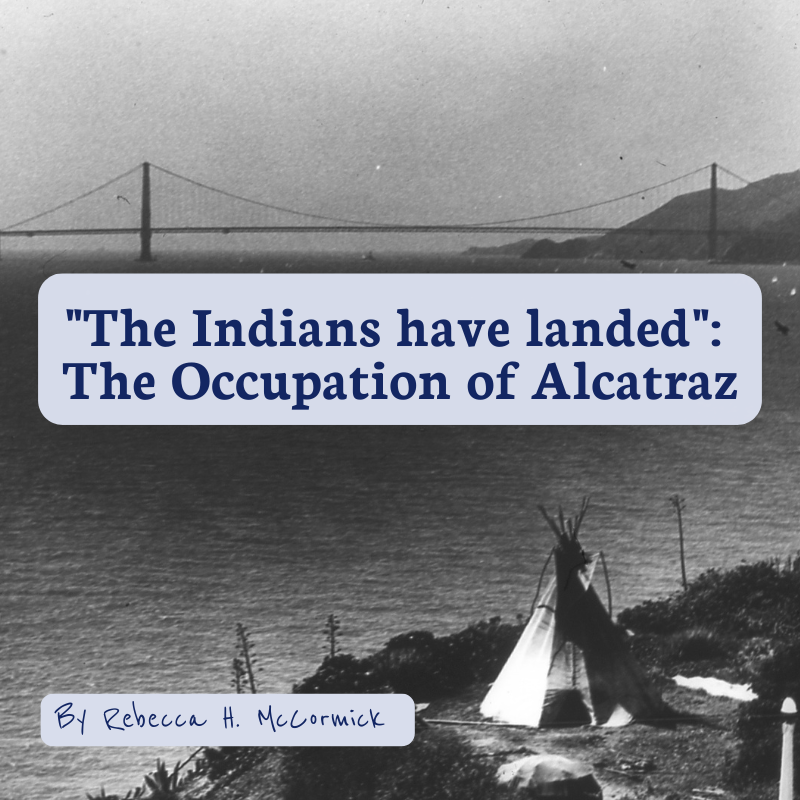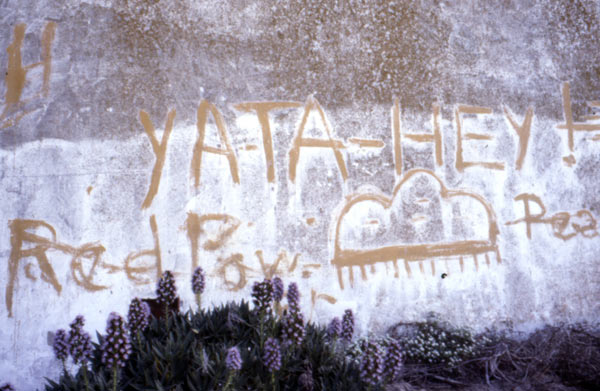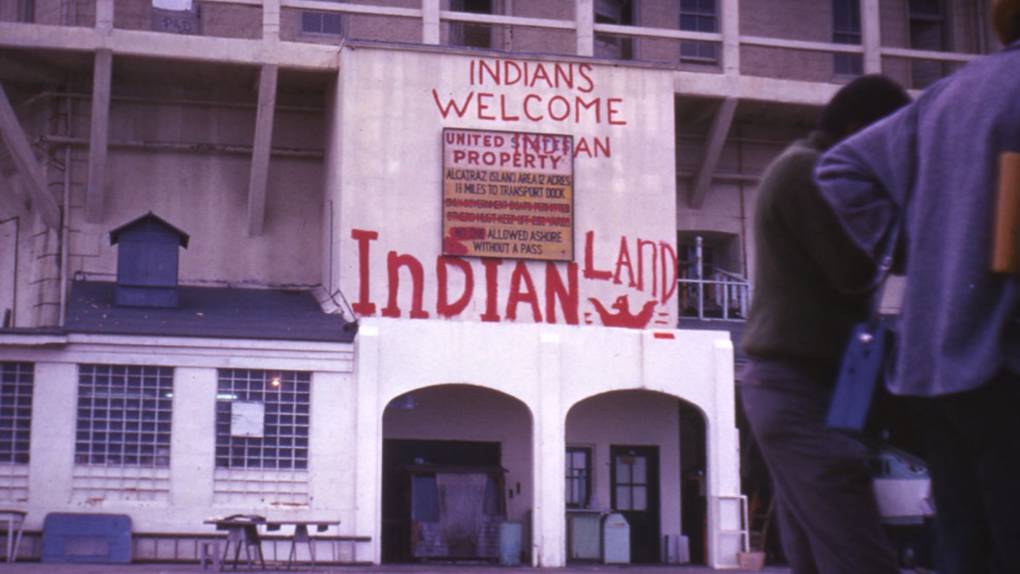
"Mayday! Mayday! The Indians have landed!" the lone guard on Alcatraz Island in San Francisco Bay called out over the radio on November 20, 1969.
A crew of Native American men, women, and children had just arrived on the shores of Alcatraz. They were members of Indians of All Tribes (IOAT), part of the Red Power movement for Native American self-determination.
Inspired by the larger civil rights movement and the Black power movement in particular, Indigenous students and young people thought that the occupation would bring much-needed media attention to the issues impacting Native Americans at the time. While the occupation was started by urban Indians from the San Francisco and Los Angeles, national media attention led Indigenous people from across the United States to join them.
But why were they trying to occupy Alcatraz?
There were a series of federal actions taken by the United States government against Native Americans in the 1950s and 1960s leading up to the occupation. First, the United States government terminated recognition of more than 100 tribes and bands as sovereign dependent nations. By doing so, they stripped the citizens of those tribes of their rights as Indigenous people as well as the tribal governments ability to govern their own nations. Second, the Indian Relocation Act of 1956 was meant to encourage Indian people to move off reservation land to cities where they were to be provided training for jobs in an attempt to alleviate the extreme poverty on many Native reservations. From 1950 to 1968, almost 200,000 Native Americans migrated from reservations to cities. However, few Native Americans who tried to accept these offers actually received these benefits once they arrived in the cities. What resulted was an influx of urban Natives who were often living in poverty or homeless and could not afford to move back home.

Graffiti from the Alcatraz occupation, featuring “Red Power”and a Navajo greeting, "Yata Hey"

Photo of the sign that originally read "United States Penitentiary" and was painted over to read "United Indian Property" during the occupation of Alcatraz, c.1970
Before the occupation, Native American activists had been in discussions with the city of San Francisco to create an Indian cultural center on the island, but it looked like it would be developed by corporate interests instead. There was a feeling of urgency to act quickly to claim Alcatraz for Native Americans.
The occupation of Alcatraz was seen as a bold move that caught the attention of nationwide media and changed the face of Indian activism for decades to come. They crafted a compelling image of Native Americans seizing land by force from the United States by “right of discovery”, the same method by which so many European explorers claimed the Americas.
What did they do on Alcatraz?
Once the Indigenous activists were settled on Alcatraz Island, they presented a tongue-in-cheek document called the Alcatraz Proclamation which outlined their demands as a treaty between the Indians of All Nations and the United States government which they called “the Great White Father and All His People”--language used by explorers Lewis and Clark. It was meant to read like the many treaties presented to Indigenous nations throughout the previous centuries. It reads in part:
“We will purchase said Alcatraz Island for 24 dollars in glass beads and red cloth, a precedent set by the white man's purchase of a similar island about 300 years ago. We know that $24 in trade goods for these sixteen acres is more than was paid when Manhattan Island was sold, but we know that land values have risen over the years. Our offer of $1.24 per acre is greater than the 47 cents per acre the white men are now paying the California Indians for their land.”
Video of Richard Oakes delivering the Alcatraz Proclamation to reporters in 1969.
At the height of the occupation, over 400 Indigenous people from across North America were residents of Alcatraz. The occupation lasted for 19 months and depended on an extensive support network for food and water deliveries to the island. Other Indigenous organizations like the American Indian Movement (AIM) assisted them as did the Black Panthers and the Brown Berets.
As the protest went on, problems arose, aggravated by local government cutting of water and electricity to the island. On June 11, 1971, government agents removed the remaining few protestors by force, ending the occupation.
While they were not able to create an Indian cultural center on the island, occupation of Alcatraz was seen as a success. During the occupation, the United States government shifted from a policy of Indian termination to a policy of Indian self-determination, or their ability to govern themselves. Many of the over 100 tribes that had been terminated during this era were able to regain federal recognition through long court battles. High-profile demonstrations like those at Alcatraz and later the Wounded Knee Occupation kept the country’s attention on Native American concerns and helped advance their goals.
Check out this historic footage of the activists and their families during the occupation below! It includes quotes from key leaders Richard Oakes (Mohawk) and LaNada Means (Shoshone-Bannock):
